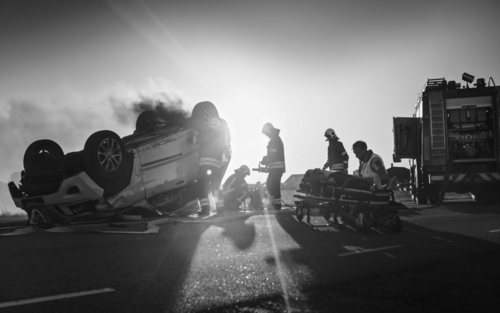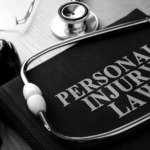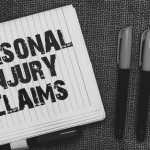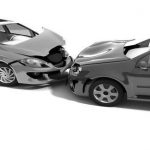When faced with the aftermath of a serious injury or death of a loved one due to another person’s or company’s negligence, the journey toward recovery involves more than just physical healing. The emotional and psychological toll can be profound, and seeking justice often means addressing these noneconomic damages. In North Dakota, understanding how these damages operate and why they are crucial for achieving full justice can help injured individuals or families find the accountability and closure they deserve.
What Are Noneconomic Damages?
Noneconomic damages refer to compensation for the human damages that an injured person or family who lost a loved one experiences as a result of an accident. In American society, you often hear these types of damages referred to as “pain and suffering,” but the law in North Dakota recognizes far more than just pain and suffering. Unlike economic damages, which cover tangible costs like medical bills and lost wages, noneconomic damages address the less visible yet more impactful aspects of human damages suffered from an injury or death.
According to North Dakota Century Code Section 32-03.2-04, noneconomic damages include:
- Pain: This encompasses the physical discomfort and sensations that result from an injury. For instance, after a catastrophic truck crash, you might experience severe pain from broken bones, internal injuries, or surgeries required to repair the damage. Pain is the immediate and ongoing physical experience, such as sharp or dull aches, throbbing, burning, or other distressing physical sensations. Think of pain as the acute, direct response to an injury, similar to touching a hot stove and feeling an immediate burn. Compensation can cover both past pain endured since the injury and future pain that will persist as the victim continues to recover or manage chronic pain that remains after healing as much as possible.
- Suffering: Suffering is broader and more encompassing than pain. It includes the emotional and mental anguish that accompanies physical pain. This can involve anxiety, depression, and stress caused by the injury and its impact on one’s life. An analogy to distinguish pain and suffering could be that pain is like the cut you get from a knife, while suffering is the lingering fear and distress of dealing with the wound and its healing process. In the context of a truck crash, suffering might include the psychological trauma of the accident, such as nightmares, flashbacks, or post-traumatic stress disorder (PTSD). Compensation addresses both the suffering experienced since the crash and the anticipated future emotional struggles.
- Inconvenience: Injuries from a truck crash often disrupt daily life, making routine activities challenging. Compensation for inconvenience acknowledges these disruptions and the extra effort required to manage everyday tasks. Imagine inconvenience as the continual hassle and adjustment needed to cope with the limitations an injury imposes, such as needing help with daily chores or appointments. This covers past inconveniences and the expected future adjustments and challenges.
- Physical Impairment: This refers to any lasting physical limitations or disabilities resulting from an injury. Compensation for physical impairment addresses the decreased physical capabilities and the impact on the individual’s lifestyle. For example, if an injury from the crash prevents you from walking without assistance, this limitation is a physical impairment. This category considers both past impairments and future expected limitations.
- Disfigurement: This includes any visible changes to one’s appearance resulting from the injury, such as scars or permanent marks, which can affect a person’s self-esteem and social interactions. Disfigurement is like the lasting visual reminder of the injury, such as a noticeable scar from surgery. Compensation covers the emotional and social impact of past disfigurement and any future implications.
- Mental Anguish: Mental anguish refers to the fallout after something happens, encompassing the feelings of distress and emotional pain that follow an injury. In the context of a truck crash, mental anguish might include the feeling of being a bad parent each day after knowing you have no fuel in the tank to parent like you used to. It addresses the internal, lingering emotional scars and the burden of coping with a new reality. Compensation for mental anguish considers both the past emotional fallout and the expected ongoing challenges.
- Emotional Distress: Emotional distress involves the anxiety and worry that come with wondering what else will happen or knowing what is coming. For instance, the anxiety of knowing by the end of the day, you will be tired out and not able to be as good a parent. Emotional distress captures the ongoing fear and anticipation of future difficulties. Compensation addresses both the past experiences of emotional distress and the future anticipated worries.
- Fear of Injury: After a catastrophic truck crash, the victim might live with a persistent fear of re-injury, which can severely affect their quality of life and willingness to engage in previously enjoyed activities. Fear of injury is the ongoing worry and avoidance behavior that stems from the original incident, like being afraid to drive after a severe car accident. Compensation can cover both past and future fears impacting the victim’s life.
- Fear of Loss and Fear of Illness: These categories address the ongoing anxiety about potential future losses or illnesses as a consequence of the injury. For instance, someone might fear losing their job due to ongoing medical issues or fear developing a chronic illness from the injury. This fear can be likened to a constant shadow over one’s life, impacting daily decisions and overall mental well-being. This encompasses both past fears and anticipated future anxieties.
- Loss of Society and Companionship: For injuries affecting personal relationships, compensation is provided for the loss of companionship and social interactions. This is especially relevant in cases where the injured person’s ability to maintain relationships is impaired. Loss of society and companionship can be seen as the strain on family and social bonds caused by the injury, such as no longer being able to participate in family outings. This addresses both past losses and future expected impacts on relationships.
- Loss of Consortium: This specifically pertains to the impact on the relationship between spouses, acknowledging the loss of marital benefits such as affection, comfort, and sexual relations. Loss of consortium is the change in the marital relationship dynamics due to the injury, like a spouse becoming a caregiver rather than a partner. Compensation considers both past impacts on the marital relationship and future expected changes.
- Injury to Reputation: In cases where an injury or the circumstances surrounding it damage the individual’s reputation, compensation can be awarded to address these impacts. Injury to reputation is like the social stigma or professional harm that can result from the circumstances of the injury. This includes past damage to reputation and future potential impacts.
- Humiliation: This includes any embarrassment or shame experienced as a result of the injury, particularly if the injury has led to visible or public consequences that affect the person’s dignity. Humiliation is the personal embarrassment one might feel from visible injuries or the need to depend on others for care. Compensation addresses past experiences of humiliation and future anticipated impacts.
How Noneconomic Damages Work Under North Dakota Law
In North Dakota, personal injury claims are governed by specific statutes and legal precedents. The courts consider several factors when determining the amount of noneconomic damages, including the severity and duration of the injury, the impact on the victim’s daily life and relationships, and testimonies from medical experts and mental health professionals.
It’s important to note that North Dakota has a cap on noneconomic damages in medical malpractice cases, currently set at $500,000. This cap does not apply to other types of personal injury claims, such as those resulting from truck crashes or premises liability cases.
Why Full Justice Matters
Achieving full justice through compensation for noneconomic damages is essential for several reasons:
- Honoring the Loss: By compensating for pain, suffering, and other intangible losses, the legal system honors the full scope of what the victim has endured.
- Promoting Healing: Financial compensation can provide resources for therapy, counseling, and other support services that facilitate emotional and psychological healing and help with coping for the rest of the person’s life.
- Encouraging Accountability: Holding the responsible party accountable for the full extent of the harm they caused promotes a sense of justice and hopefully deters future negligence.
- Providing Closure: For many victims, the acknowledgment of their suffering and the compensation received can be a significant step towards emotional closure and moving forward with their lives.
Finding The Right Attorney
If you or a loved one has been injured in a catastrophic truck crash, finding a knowledgeable and compassionate personal injury attorney in North Dakota is crucial. An experienced attorney will understand the complexities of noneconomic damages and work tirelessly to ensure you receive the full compensation you deserve.
Our team at SW&L Attorneys is dedicated to advocating for our clients’ rights and helping them achieve the closure they need to move forward. Contact us today for a consultation, and let us help you on your journey to full justice and recovery.
Please read the disclaimer here.










